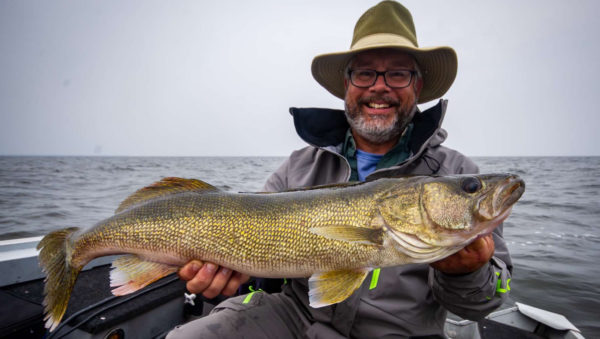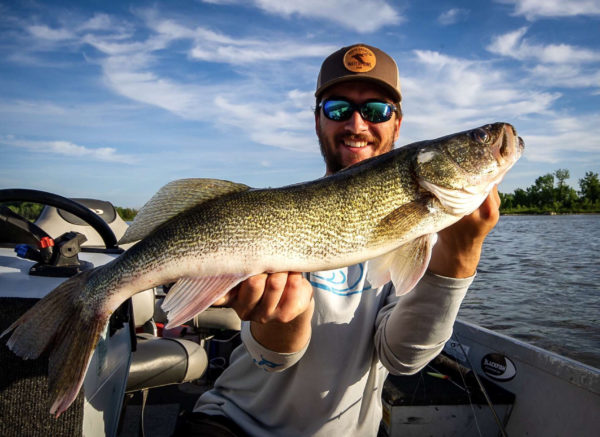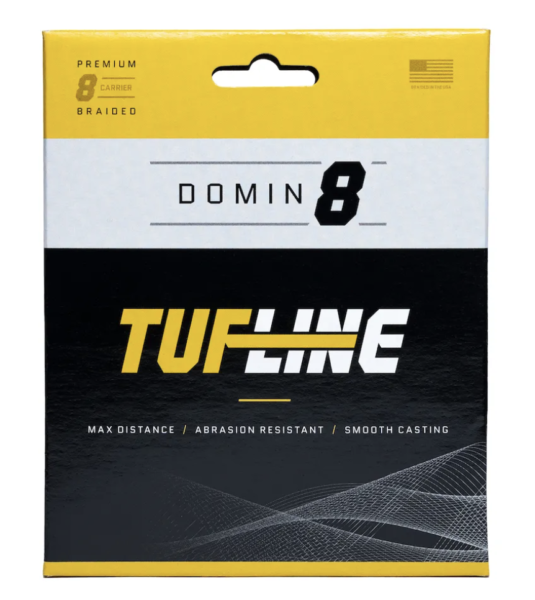Drop Shot Mastery from Mustad
Category: article
Aug 3rd, 2022 by Keith Worrall
Modified Aug 3rd, 2022 at 12:37 PM

Don Stiles
In our array of strike-provoking tools, there is one technique that is as close to universally effective as it gets – and that is the drop shot rig. At first glance, this apparently simple system seems like little more than a rearranged version of “hook, line, and sinker” – but in fact, the drop shot is a highly refined, extraordinarily versatile way of targeting fish during any month on the calendar. Whether you fish in fresh or salt water, chasing panfish or apex predators, the drop shot rig belongs in your bag of tricks.

Begin building your drop shot rig by spooling up with a braided main line to support long casts and provide you with enhanced sensitivity. Select a braid with a smooth finish and the thinnest diameter possible; these attributes will help you cast the drop shot rig far away from the boat and reduce air- and water resistance as you fish it back to the boat. Generally, an eight-strand braided line is preferable to other options. DOMIN8 from TUF-LINE is an excellent choice. I use 15-pound-test DOMIN8 for the vast majority of my drop shot fishing, stepping down to ultra-thin 10-pound-test under conditions of high water clarity or heavily pressured fish.
Next, add a fluorocarbon leader, like Fluorocarbon XS from TUF-LINE. Fluoro’s low-stretch characteristics enhance the sensitivity of the drop shot presentation while maintaining an exceptionally stealthy presentation at the lure or bait. A good general length is around four feet of leader, but in ultra-clear water or when dealing with line-shy fish, you may need to go longer. 8 or 10-pound-test fluorocarbon is adequate for many multi-species fishing situations; highly pressured fish may require you to move down to 6-pound-test, while using 12- or even 15-pound-test will be just fine in stained or turbid water.

Now, tie in your hook. For a live bait presentation, a #4 or #6 Mustad Drop Shot Hook is a good starting choice. With a larger soft plastic bait, a more traditionally-sized bass hook is appropriate. In any case, match the overall hook size to the bait you’re presenting. You’ll attach the hook to the leader using a Palomar knot, leaving a long tag end. In general terms, if I have a four-foot leader, my hook will be positioned half-way down the leader length. Pass the tag end back through the eye of the hook from the top to the bottom, which will help the hook to stand out horizontally from the leader.
Finally, add a sinker. For simple drop shot rigs, I like to use a bell sinker, with enough weight to keep my rig on the bottom in the face of wind, waves, or current. Carry a range of weights, from 1/8 oz to ½ oz or more, depending on the depth range you typically fish. Mustad’s eco-friendly Tungsten Drop Shot weights are very popular and allow your rig to fall through the water column more quickly than when using a lead sinker. The high density of tungsten also does a superior job of telegraphing bottom hardness or softness through the line to the angler. Your hook-to-sinker distance on the leader is critical; a distance of 10-12” is probably the minimum that most anglers will use for fish that are tight to the bottom, but don’t be afraid to position the hook farther away from the sinker in very clear water or when targeting suspended fish. In most instances, a 20-24” distance between the hook and sinker is a good place to start.

Drop shot rigs are typically best presented with spinning tackle. Since drop shot fishing is generally considered to be a finesse technique, it’s best to select a rod that is 6 ½ to 7 feet in length or longer, generally with Medium Light power to act as a shock absorber when a boatside trophy makes a drag-peeling run. The 6’10”, Medium Light power, Fast action BLF Instinct spinning rod from the Mustad rod works is an exceptional choice. Crafted with IM8 Japanese Toray premium graphite blanks, the BLF Instinct rod series represents the optimum blend of sensitivity and strength and shoots bullseyes when fishing drop shot rigs. Add a 2500-series spinning reel with a smooth drag, and you’re ready to fish.
When it’s time to fish, dress the hook with the bait of your choice, and make a long cast. Live baits like leeches, minnows or nightcrawlers are excellent choices for walleye and panfish, while subtle soft plastics with thin profiles are frequently used when targeting bass. Keep the bail open until the sinker contacts the bottom, and then, close the bail and reel up your slack. Now, on a tight line, wiggle and twitch the bait, but do so without lifting the weight off the bottom. After you stop that motion, get tight to the weight again and pause – this is frequently when strikes will occur. After a few moments, repeat that bait shaking, or, reel in a small amount of line and start shaking again. We want that bait to hover, twitch, and convulse just off the bottom, right in the faces of the fish living there. If your sonar unit shows fish in the area but your drop shot rig isn’t getting bit, the first change to make is to lengthen the distance between hook and sinker; most fish won’t “feed down” but will happily investigate an offering that is quivering a few feet above them. When you feel the strike, reel down toward the weight and set the hook with an upward sweeping motion to pin the fish.
Fishing a drop shot rig is really that simple. Tie one up on your next trip, and enjoy some drop shot fun!
